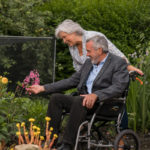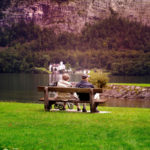
Creating an environment where older adults feel secure, supported, and respected is central to quality aged care. Every element, from the layout of a room to the type of furniture used, plays a role in preserving independence while ensuring well-being. Many care facilities and families work closely with aged care equipment suppliers to source products that meet evolving needs. Among the many items available, bed rails aged care options stand out as practical solutions, offering a balance between safety and comfort for those with limited mobility. These choices are part of a broader commitment to thoughtful, person-centred care.
Designing spaces for elderly residents begins with understanding their unique physical and emotional requirements. The right equipment can enhance quality of life, reduce the risk of injury, and promote a sense of autonomy. For individuals who value moving around independently, lightweight mobility aids or adjustable seating can offer both function and dignity. For those who require more support, modern designs integrate ergonomic features that reduce strain on carers while improving user comfort.
The aesthetics of aged care environments have also evolved. Rather than focusing solely on clinical function, contemporary solutions aim to create warmth and familiarity. Comfortable furnishings, soft lighting, and calming colour palettes contribute to a homely atmosphere, reducing feelings of anxiety and isolation. Many equipment designs now incorporate subtle styling, ensuring essential aids blend naturally into living spaces without feeling intrusive.
Safety remains a constant priority. Falls are one of the most common causes of injury among older adults, making prevention strategies critical. Non-slip flooring, well-placed handrails, and supportive seating can help minimise risk. In bedrooms, adjustable-height beds and protective features are paired with thoughtful layouts that provide clear, unobstructed paths for movement. These elements reduce hazards while allowing residents to retain a sense of independence in their daily routines.
The role of technology in aged care is growing steadily. Innovations like pressure-relief mattresses, sensor-based fall detection systems, and remote monitoring tools are now commonplace in forward-thinking care settings. These advancements not only protect residents but also give families peace of mind, knowing their loved ones are being monitored in real time. Integrating such technology with traditional support measures creates a more responsive and adaptable care environment.

Personalisation is another crucial aspect of modern aged care. No two residents have identical needs, so equipment choices should reflect individual preferences and health conditions. Adjustable chairs, tailored support cushions, and adaptive utensils can all be chosen to suit specific requirements. This approach ensures that every resident receives care solutions that feel personal, rather than generic.
Staff training plays a key role in maximising the effectiveness of aged care equipment. Even the most advanced tools can fall short without a proper understanding of how to use them. Ongoing education for carers ensures they are confident in adjusting, maintaining, and safely operating the equipment. It also enables them to recognise when changes or upgrades are needed to meet evolving health needs.
Cost considerations are a practical factor for both facilities and families. While investing in high-quality equipment may require a larger upfront budget, the long-term benefits often outweigh the initial expense. Durable, well-designed products tend to last longer, perform more reliably, and reduce the need for frequent replacements or repairs. In many cases, this investment also helps prevent accidents and related medical costs, making it financially sound over time.
The emotional impact of the proper care environment should not be underestimated. When residents feel safe and comfortable, they are more likely to engage in social activities, maintain physical health, and enjoy a positive mental outlook. Creating such spaces is not solely the responsibility of healthcare professionals—it often involves collaboration between families, designers, and suppliers to ensure every detail supports the resident’s well-being.
Ultimately, aged care is about more than meeting physical needs. It’s about providing a space where dignity, safety, and quality of life can flourish together. From thoughtfully selected equipment to a supportive, well-trained care team, every element contributes to this vision. By combining functional solutions with compassionate understanding, it is possible to create environments where older adults can live not just comfortably, but meaningfully, every day.







